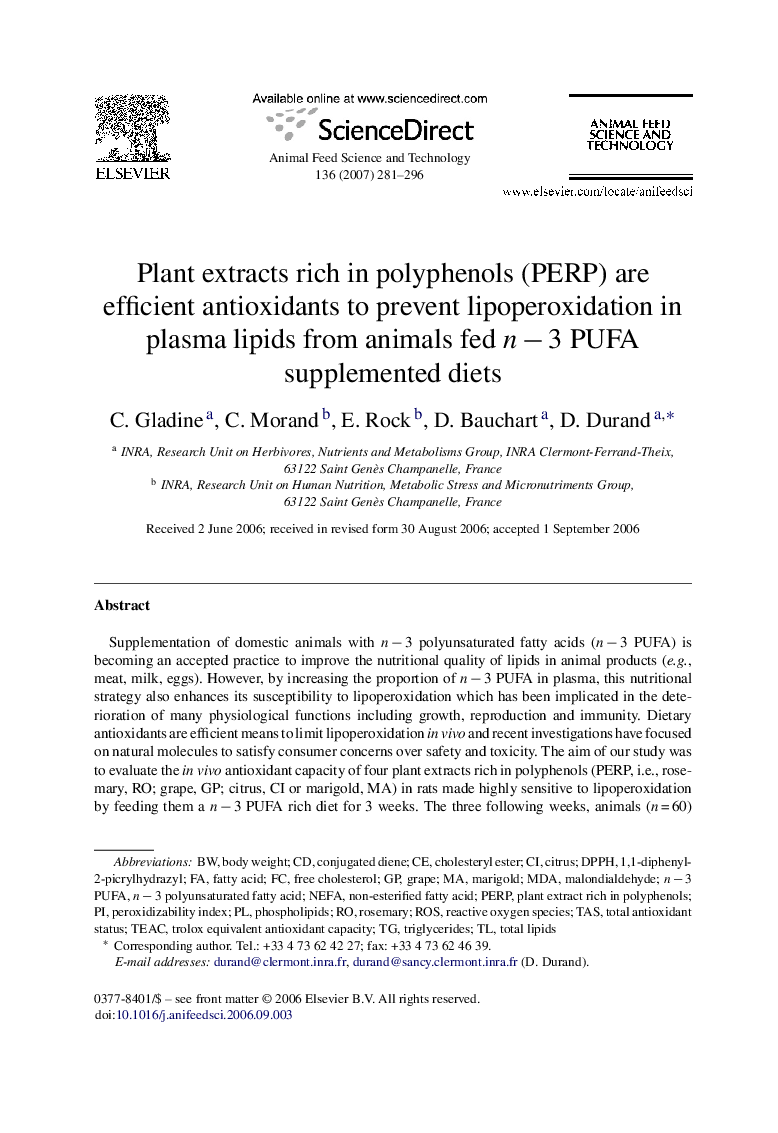| Article ID | Journal | Published Year | Pages | File Type |
|---|---|---|---|---|
| 2421036 | Animal Feed Science and Technology | 2007 | 16 Pages |
Supplementation of domestic animals with n − 3 polyunsaturated fatty acids (n − 3 PUFA) is becoming an accepted practice to improve the nutritional quality of lipids in animal products (e.g., meat, milk, eggs). However, by increasing the proportion of n − 3 PUFA in plasma, this nutritional strategy also enhances its susceptibility to lipoperoxidation which has been implicated in the deterioration of many physiological functions including growth, reproduction and immunity. Dietary antioxidants are efficient means to limit lipoperoxidation in vivo and recent investigations have focused on natural molecules to satisfy consumer concerns over safety and toxicity. The aim of our study was to evaluate the in vivo antioxidant capacity of four plant extracts rich in polyphenols (PERP, i.e., rosemary, RO; grape, GP; citrus, CI or marigold, MA) in rats made highly sensitive to lipoperoxidation by feeding them a n − 3 PUFA rich diet for 3 weeks. The three following weeks, animals (n = 60) were fed the same n − 3 PUFA rich diet without (Control) or with PERP (5 g/kg diet). At sacrifice, plasma was collected to measure the total antioxidant status (TAS), concentrations of malondiadehyde (MDA) and α-tocopherol and to evaluate kinetics of conjugated diene (CD) generation, (i.e., lag phase, oxidation rate and maximal CD production). Intensity of lipoperoxidation (MDA production) in plasma was reduced by 12% (P<0.001) in all PERP supplemented animals, irrespective to the plant source. This effect was not associated with modification of TAS or plasma α-tocopherol levels, suggesting that PERP directly protected PUFA against lipoperoxidation. Moreover, PERP decreased plasma susceptibility to lipoperoxidation as the lag phase was increased by 36% (P<0.01), especially with the RO diet (+79%, P<0.01). On the basis of these results, we conclude that PERP, and most especially RO and GP, limit efficiently the lipoperoxidation in plasma of rats fed a n − 3 PUFA rich diet. They could therefore be attractive antioxidants for animal nutrition, although further experiments are necessary to verify that PERP antioxidant capacity in vivo is not dependent on animal species.
